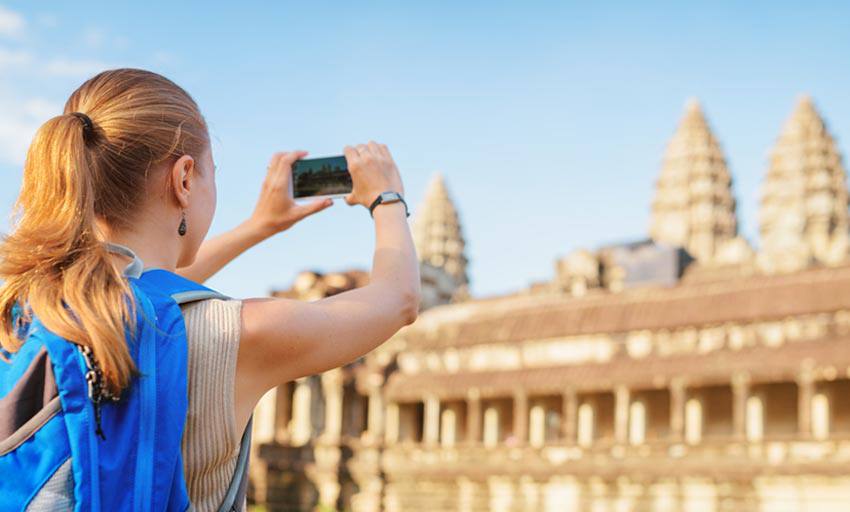Why travellers prefer Blue Cross
- Canada's #1 travel insurance brand and recognized worldwide
- Over 80 years of expertise in insurance
- $5 million travel insurance coverage, with or without deductible
- Flexible and affordable travel insurance solutions
- Free quote available online
- Travel assistance available 24/7 for any emergency, anywhere you travel

Pro Tips for Amateur Photographers
Published on: October 7, 2015
Feel like your travel photos don’t do the wonders of the world justice? If you’d like to take pride in your shots remember photography is an art anyone can learn.
With a little practice you, too, can snap flawless images with your smartphone. Here are some basic tips to take with you on your next trip.
ABCs of composition
 Approach: Think of the screen as a canvas. What should you add? Why? How? Feel free to play with angles and contrasts to make your photo unique.
Approach: Think of the screen as a canvas. What should you add? Why? How? Feel free to play with angles and contrasts to make your photo unique.
Rule of thirds: Imagine two horizontal lines crossing two vertical lines on your screen like a tic-tac-toe game. Place the subject or focal points somewhere other than in the centre square. Many devices have a grid you can display to make things easier.
Landscapes: A photo has only two dimensions. Compensate for the lack of depth by adjusting your focal point to reposition elements. For example, to highlight the sky, just lower the horizon.
People: Position yourself to show the point of view of a subject that is not looking at you. If the background is too busy, pull in closer. When taking a picture of a child or small animal, kneel down.
Let there be light!
 Au naturel: Take advantage of natural lighting to limit use of the flash, which often yields disappointing results. Get a feeling for the light near windows and at magic moments like sunrise and sunset to create amazing shots.
Au naturel: Take advantage of natural lighting to limit use of the flash, which often yields disappointing results. Get a feeling for the light near windows and at magic moments like sunrise and sunset to create amazing shots.
Angle: The sun shouldn’t overpower your subject’s face. If necessary, set up shots in the brightest shade possible. In dark locations, hold the camera or phone with both hands and your forearms in close to avoid moving. Consider the direction of the light. Low-angle light adds a personal touch to your photos.
HDR: Almost all cameras have a high dynamic range (HDR) mode that lets you take better quality photos with richer colour, contrast, and detail. In HDR mode you automatically take several photos of the same shot to create a single image with optimal lighting. This setting is especially good for stationary subjects.
Crystal clear
 Depth: Add texture and life to your photos by choosing the elements that should be crisply in focus and leaving unimportant items in the background. To do this, move closer to the subject or take the time to adjust the lens manually. When you try to capture too many subjects, you often overpower the most important elements.
Depth: Add texture and life to your photos by choosing the elements that should be crisply in focus and leaving unimportant items in the background. To do this, move closer to the subject or take the time to adjust the lens manually. When you try to capture too many subjects, you often overpower the most important elements.
Movement: Have fun playing with movement. It’s all about following a subject in motion. The result is a subject that stands out clearly against a blurred background.
Quality: In your camera or phone’s photo settings, select the best possible quality. If you’re short on space and have to choose, you can always reduce the resolution, although it may mean viewing your photos on screen only.
You’re the artist!
Filter or editing effects can make your photos into masterpieces, but be careful not to overuse them. Follow the basic rules listed above and let the beauty of whatever you see through your lens be your guide.
En route for adventure
If you’re lucky enough to be taking a trip soon, consider protecting yourself against unexpected mishaps like the loss of your personal belongings with Blue Cross travel insurance!